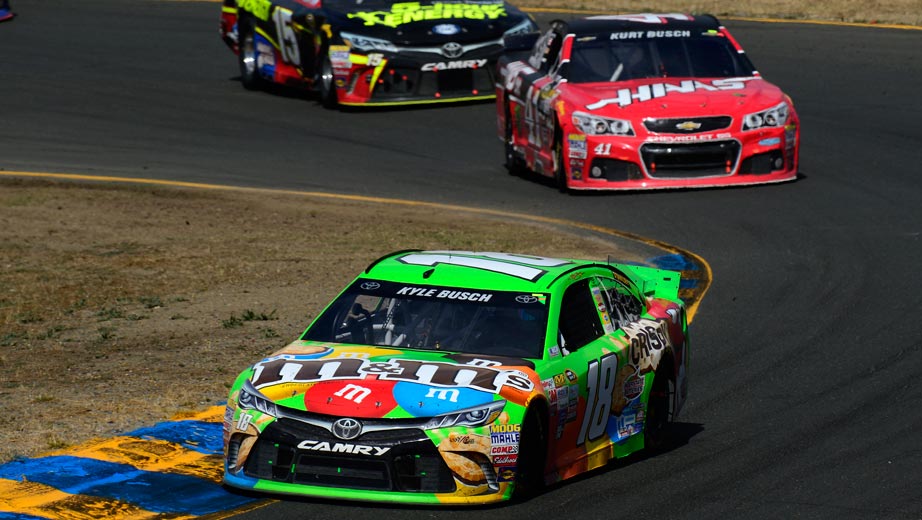Posted on
January 15, 2019 by
Martin Banks
When most people think of racing, they usually picture NASCAR cars or horses running in circles, but there’s an entirely different breed of racing that has a rich and varied history. Let’s take a closer look at the history of truck racing.

Smokey and the Bandit II
We can thank the 1979 sequel to Smokey and the Bandit for the inception of truck racing. The first truck race was featured in the opening scenes of this movie, taking place on the Atlanta Motor Speedway on June 17, 1979. The sport started as the American Truck Racing Association and transitioned into the Great American Truck Racing Circut when N. Linn Henndershott purchased the competition in 1982.
Most of the truck used in these early races were work trucks with tandem rear axles that still had their street tires attached. Truck races took place on both dirt and paved oval tracks, and in spite of the lack of modification to the vehicles, these trucks were able to attain speeds of 150mph or more efficiently. Read the rest of this entry →
Tags: racingtruck racing
Category
Scott Huntington
Posted on
May 15, 2017 by
Martin Banks

Former F1 pilot Hans Stuck is credited with one of the most memorable quotes in autodom.
“When I raced a car last,” Stuck proclaims, “it was a time when sex was safe and racing was dangerous, now it’s the other way around.”
Social commentary aside, Stuck is right. The advances made in safety for racing drivers over the last half-century have reduced the sports mortality rate by orders of magnitude, and even allowed drivers to walk away from crashes that at one time would most certainly have been fatal.
Even now, engineers and medical experts work tirelessly to continue to improve the safety record of a sport that is inherently dangerous. Let’s take a look back at how things came so far.
Read the rest of this entry →
Tags: F1historyindy carracingsafety
Category
Auto Racing, Scott Huntington, Sports History
Posted on
February 15, 2016 by
Martin Banks
Racing is a pastime shared around the world, although the form it takes may differ depending on where you are. From NASCAR to rally cars, from cross-country to the 100 meter dash, we’ve found a huge variety of ways to race. Of course, some races are stranger than others.
Robot Camel Racing

Camel racing in the Arabian Peninsula is akin to horse racing in Europe. It’s a tradition that goes back hundreds of years, and it’s fiercely competitive. The United Arab Emirates in particular has a strong camel racing community, but in recent years the tradition has undergone a transformation. In the 80s and 90s, it was common to train children as jockeys due to their lighter weight. However, camel racing is a dangerous sport, and injuries were common. That’s where the robots come in. Read the rest of this entry →
Tags: racingweird sports
Category
Extreme Sports, Scott Huntington
Posted on
January 13, 2016 by
Martin Banks
Stock car racing got its name from the early days of the sport, when racecars were strictly stock cars from the factory that had a few performance and safety tweaks. The stock cars we watch today have come a long way from their ancestors, constantly improving and resetting the standards of racing.

How do today’s stock cars differ from what you can buy from the factory? There are several major differences:
The Engine
For comparison, we’ll use a NASCAR engine. NASCAR engine blocks are custom-made, not modified from the original engine block. They do, however, share some similarities with the original. They have the same number of cylinders, the same base displacement and the same cylinder bore centerlines. Where NASCAR engines stand in stark contrast to regular engines is in the power – they’re consistently modified so they can produce the maximum.
One main difference comes in the NASCAR engine’s cam profile. It’s designed to keep the intake valves open longer, which means more air can be packed into the cylinders. More air and fuel is let in through the use of carburetors, unlike street cars, which mostly use fuel injection. Read the rest of this entry →
Tags: carsracing
Category
Auto Racing, NASCAR, Scott Huntington
Posted on
September 08, 2015 by
Martin Banks
You may be the biggest racing fan on the planet, and you want to try your hand at the circuit. What it all comes down to, though, is money. You can’t run with the big guns until you get a car and dedicate it to racing.

With all these souped-up racecars around, you may think it costs a fortune to get a car up and running for racing. This simply isn’t true. You can start with any basic, affordable sporty car – even a factory one, right off the assembly line. The point is, racers add to their cars as they go.
How do you think great racers started in the first place? That race-ready Volkswagen Jetta didn’t just fall into their hands – they worked hard to get it there. You can, too; but you’ll need to pick a set of wheels first. Here are some cheap and reliable suggestions:
Volkswagen Golf GTI

If you’re looking for the perfect starter, look no further than the Golf. Hailed by racers for a little more than a decade, this is a modder’s dream car. It’s a hot little hatch with some screaming power – 210 horsepower and a 2.0 liter turbocharged engine.
While the car’s acceleration is a tad slow at 8.5 seconds, it makes up for it with its unrivaled agility. Read the rest of this entry →
Tags: carsracing
Category
Auto Racing, Scott Huntington
Posted on
August 07, 2014 by
Martin Banks
For NASCAR fans, summertime means it’s time to load up some camping gear and head to the Poconos. The home of a pair of NASCAR Sprint Cup Series races held in June and August—the Pocono 400 and the GoBowling.com 400 respectively—the Pocono Raceway is one the most storied tracks in NASCAR history. Also home to the Pocono Indycar 500 and used by Sports Car Club of America along with motorcycle clubs and driving schools, the track gets a lot of use throughout the year.

The track is famous for its shape. Often described as a tri-oval, the track is actually closer to a triangle than an oval. It is unique in that its three turns are all different and modeled after turns from other tracks. Turn One has 14 degree banking and was based on the turns at the old Trenton Speedway. Turn Two, which has 9 degree banking and is also known as “The Tunnel Turn,” is similar to the Indianapolis Motor Speedway, while the 6 degree banking of turn 3 is based on The Milwaukee Mile.
But though NASCAR wouldn’t be the same without it today, there was a time when the Pocono Raceway nearly closed down for good. The raceway held its first race in 1968 on the three-quarter mile track. Three years later, the first 500 mile Indy race came to the Poconos on the two and a half mile rack and the first 500 mile NASCAR race at Pocono Raceway was held in 1974. But just as Pocono Raceway was getting its NASCAR start, the owners of the track, the Mattioli family were having some financial problems. Read the rest of this entry →
Tags: NASCARPoconosracingsports history
Category
NASCAR, Scott Huntington






